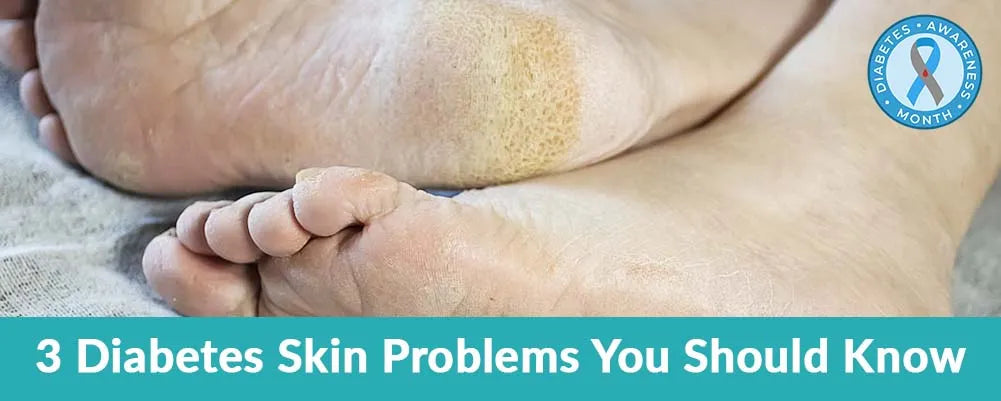Skin problems which diabetes can give you

Diabetes is like an uninvited guest that overstays its welcome, affecting various aspects of your life. While its impact on blood sugar levels is widely known, the effects on the skin are often underestimated. Your body's largest organ can bear the brunt of diabetes, presenting challenges that go beyond managing glucose. In this blog, we'll explore three skin problems that diabetes can throw your way, turning your skin into a battleground.
- The Moisture Dearth:
Diabetes can be a bit of a moisture thief. One of the first skin problems to strike is dryness. High blood sugar levels can destroy the moisture from your skin, leaving it dry and flaky. Imagine your skin as a thirsty plant, craving hydration but struggling to retain it. This moisture dearth is not just uncomfortable, it can lead to cracks in the skin, creating an open invitation for infections.

What can you do?
Combat the dryness with a moisturising routine. Go for creams with ingredients like hyaluronic acid or glycerin to lock in moisture. Regular application can change your skin from a barren desert into a hydrated oasis.
- The Itchy Dilemma:
If you've ever experienced a constant itch, that seems to have a life of its own, diabetes might be pulling the strings. Itching, also known as pruritus, is a common skin woe for individuals with diabetes. The culprits? Dry skin, poor circulation, and nerve damage. It's like a trio of troublemakers conspiring to turn your skin into an itchy canvas.

What can you do?
Resist the urge to scratch (easier said than done, we know!). Instead, pamper your skin with soothing creams. Aloe vera and chamomile-infused lotions can provide relief. However, if the itch persists, it's essential to consult with a healthcare professional.
- The Dark Side of Diabetes:

Diabetes can cast a shadow on your skin, quite literally. Dark patches, known as acanthosis nigricans, can develop in areas where skin folds, like the neck, armpits, and groin. These patches may appear velvety and can be accompanied by skin thickening. The connection? Insulin resistance and hormonal fluctuations linked to diabetes.
What can you do?
To deal with the dark patches, you need to control your sugar levels. A well-balanced diet, regular exercise, and medication adherence are key. Additionally, consulting with a dermatologist can help address the cosmetic aspects of these skin changes.
Living with diabetes is a journey filled with twists and turns, and your skin is an unsuspecting passenger on this rollercoaster. The key to navigating these skin problems is awareness and proactive care. Establishing a skincare routine that caters to the unique needs of diabetes-affected skin can make a world of difference. Remember, your skin is not just a canvas for these challenges; it's a resilient warrior that can bounce back with the right care and attention.

As you face these dermatological dilemmas, know that you're not alone. Many individuals with diabetes face these skin issues, and solutions are available. Embrace your skin, pamper it with the care it deserves.








